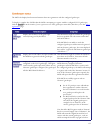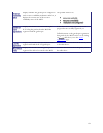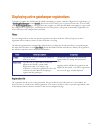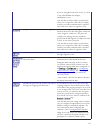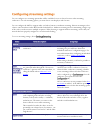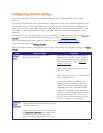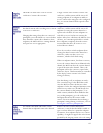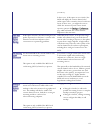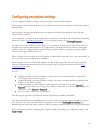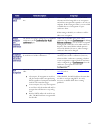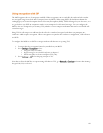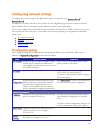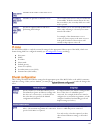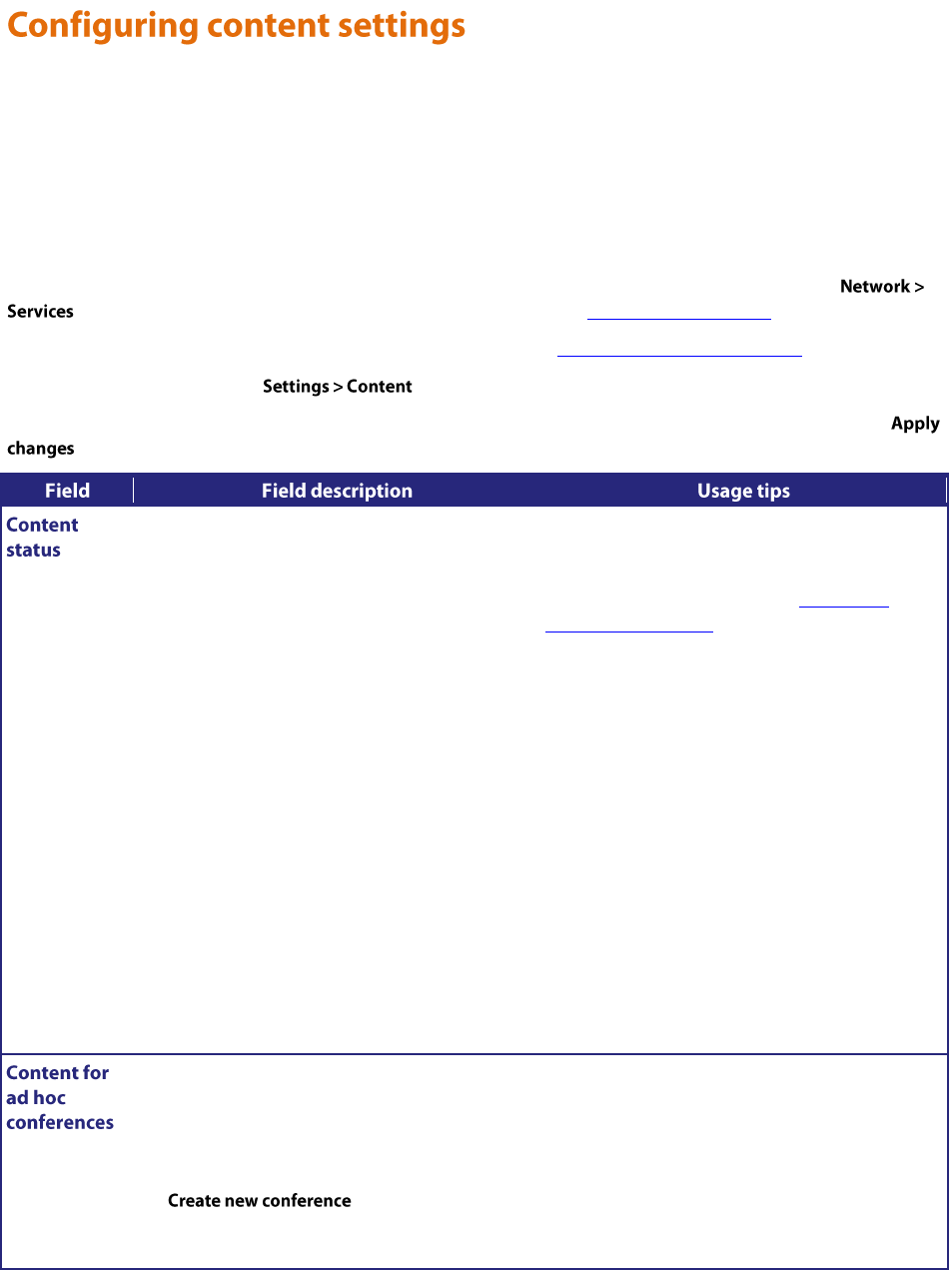
131
The content settings affect the behavior of the MCU with regard to H.239 and BFCP (Binary Floor Control
Protocol).
H.239 is the protocol that allows for an additional video channel (known as the content channel) alongside the main
video channel in a video-conferencing call that uses H.323; BFCP is a protocol that allows for an additional video
channel (known as the content channel) alongside the main video channel in a video-conferencing call that uses SIP.
For example, a conference participant may want to contribute a slide presentation from a laptop within a video
conference.
Note that BFCP uses the TCP port (5070); if you want to use BFCP, you must enable that service on the
page. For more information about configuring services, refer to Configuring IP services.
For more information about content support in conferences, refer to Content channel video support.
To access these settings, choose .
Refer to this table for assistance configuring the content settings. After making any configuration changes, click
.
Controls whether the MCU as a whole is
permitted to use content.
If this setting is Enabled, you can still enable or
disable the use of content on a per-conference
basis. For more information about configuring
individual conferences, refer to Adding and
updating conferences.
If this setting is Disabled, no conference will be
able to use content.
If this setting is H.239 only, no conference will be
able to use BFCP content.
Certain video conferencing endpoints and
infrastructure such as gatekeepers may not
operate correctly when communicating with
equipment (such as the Codian MCU) which
declares H.239 capability. It may therefore be
necessary to set this to Disabled in order to work
with legacy devices (this will, of course, also
prevent content video streams being used with
any H.239- or BFCP-aware equipment).
If this setting is Enabled, content channel video
will be permitted in ad hoc conferences as well as
scheduled conferences.
Ad hoc conferences are those created using either
the option within an auto
attendant or via calls to an E.164 number
associated with the configured MCU service prefix.



